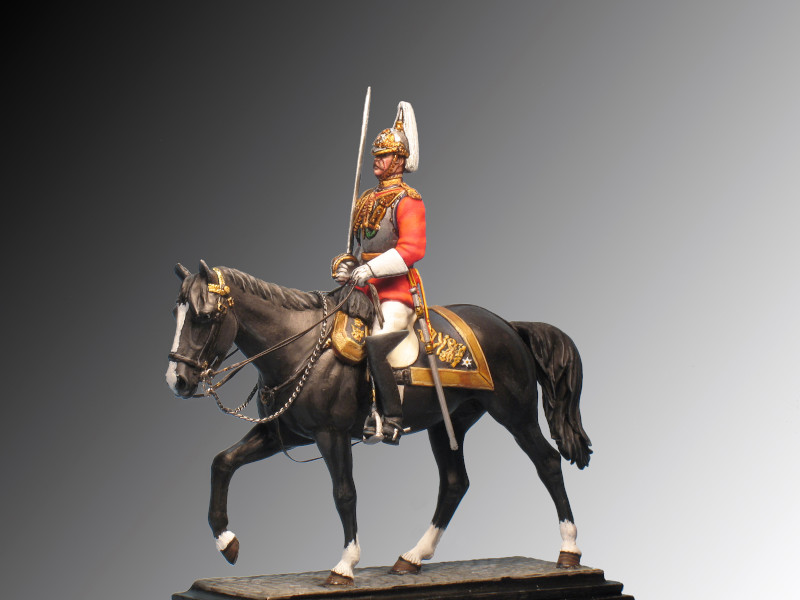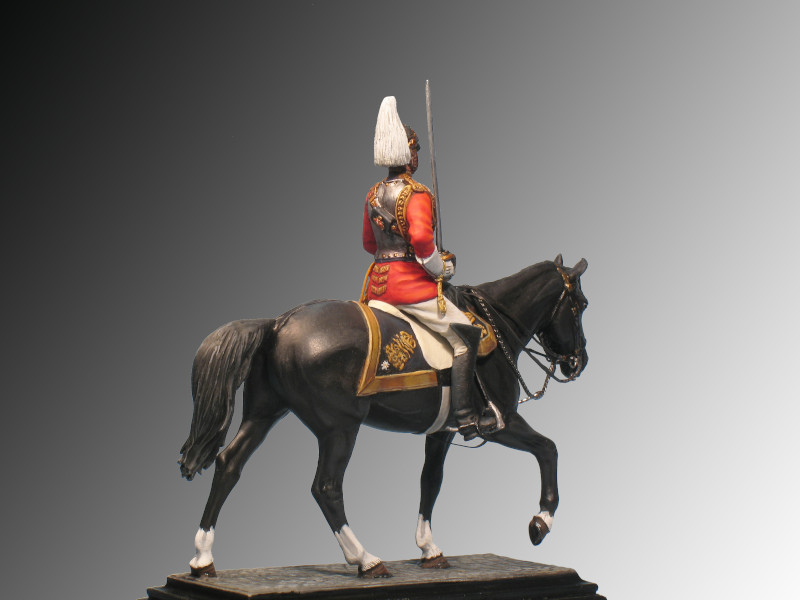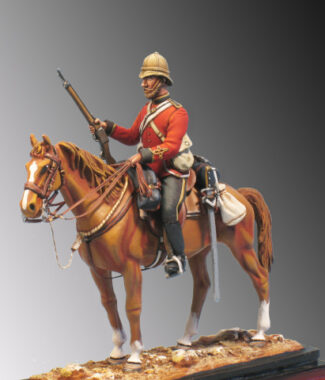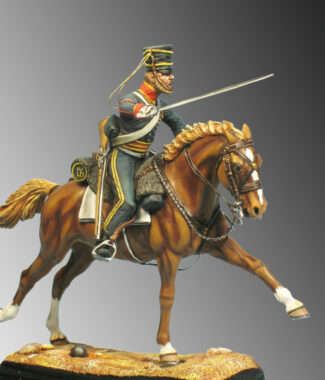You must be logged in to post a review.
1st Life Guards – 1897
€68.00
Figure to assemble and paint
Ref.: 10 – QVC
Weight: 250 grs.
Material: White Metal
Number of Pieces: 12
Historical Review:
The Life Guards are the oldest regiment in the British Army and form part of the Household Cavalry, comprising the two oldest regiments in the British Army, the Life Guards and the Blues and Royals, the latter created after the merger of the Royal Horse Guards (Blues) and the 1st (Royal) Dragoons in 1969. They are involved in the security of the royal residences, both in London and Windsor, and in accompanying the monarch and his family during state events, as well as protocol. They also take part in operations as an armoured cavalry regiment.
The two regiments of Life Guards – the 1st and 2nd – date back to the late 1650s, when many English Royalists crossed the English Channel to join Charles II, son of Charles I, who had been executed by Cromwell’s Parliamentarians in 1649.
The following troops were reorganised into the 1st Life Guards Regiment:
1st Unit, Horse Guards.
1st Unit, Horse Guards Grenadier Guards.
and the following units were reorganised into the 2nd Life Guards Regiment:
2nd Unit, Horse Guards.
2nd (Scots) Unit, Horse Grenadier Guards.
From 1877, 1st Life Guards and 2nd Life Guards.
From 1922, The Life Guards (1st and 2nd).
From 1928, The Life Guards.
The battle honours of the regiment were:
Early Wars: Dettingen, Peninsula, Waterloo, Tel-el-Kebir, Egypt 1882, Relief of Kimberley, Paardeberg, South Africa 1899–1900
The Great War: Mons, Le Cateau, Retreat from Mons, Marne 1914, Aisne 1914, Messines 1914, Armentières 1914, Ypres 1914 ’15 ’17, Langemarck 1914, Gheluvelt, Nonne Bosschen, St. Julien, Frezenberg, Somme 1916, Albert 1916, Arras 1917 ’18, Scarpe 1917 ’18, Broodseinde, Poelcappelle, Passchendaele, Hindenburg Line, Cambrai 1918, France and Flanders 1914–18.
The 1st Life Guards Regiment’s baptism of fire took place during the Peninsular War (1807-14), at which time the feathered helmet was introduced. Recalled to the Spanish mainland in 1812, the regiment fought in many actions, large and small, including the Battle of Vitoria (1813).
When hostilities ceased in Spain, the regiment returned to London only to be hastily transferred back across the Channel to face Napoleon’s resurgence. The stage was set for the climactic Battle of Waterloo, which was fought on 18 June 1815. The 1st Life Guards charged the French cavalry and saved the day, driving the lancers from the battlefield. The regiment subsequently fought in several actions as part of Lord Uxbridge’s cavalry.
After Napoleon’s defeat, a period of relative peace followed. None of the Life Guards regiments were sent to the Crimean War (1853-56), nor did they perform police duties in Queen Victoria’s vast empire. However, occasionally at home, the regiment (like all regiments) was called upon to perform civilian police duties.
In 1882, the regiment was sent to Egypt for the war against Arabi Pasha, and subsequently went to the Sudan for the war of 1884-85 before returning to London in 1885.
During the Boer War in South Africa (1900-02), the 1st Life Guards was again overseas. In South Africa, the Regiment took part in many important actions, returning to London in 1902.
The figure of this Life Guards officer wears the scarlet tunic, a metal cuirass and a matching helmet with a white horsehair crest tied at the top; the exceptions to this are the regiment’s trumpeters, who wear a red plume, and the farriers, who wear blue tunics and have a black plume. Characteristic of both regiments are the black horses, a tradition that has remained unchanged since their creation. Today the uniform has remained virtually unchanged. The service uniform is the same khaki uniform as the rest of the army with high riding boots. Officers and Senior N.C.O wear a red cord on the right shoulder, as well as the Sam Browne belt.








Reviews
There are no reviews yet.